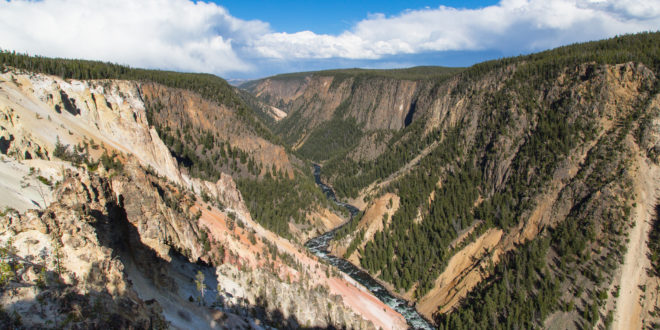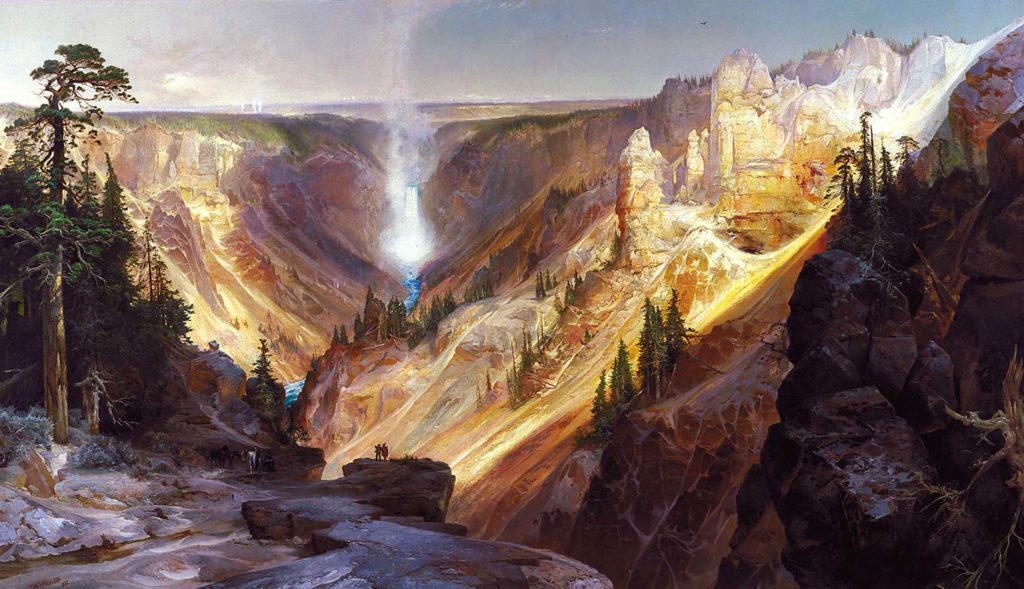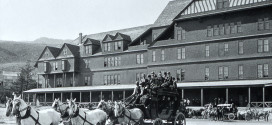Early expeditions were the foundation for the signing of the Act of Dedication on March 1, 1892, establishing Yellowstone National Park!
Long before any notions of a national park, the Yellowstone region was home to the Tukudeka, or “Mountain Sheepeaters,” a band of Eastern Shoshone who lived year-round in the park. Many other tribes (the Blackfeet, Cayuse, Coeur d’Alene, Nez Perce, Shoshone, Umtailla, and Bannock, among others) traveled through the park annually.
For most of the 19th century, Yellowstone was intermittently explored and discussed by fur trappers and mountain men, either through newspaper articles or through campfire tall tales. By chance, the Lewis and Clark Expedition just missed finding Yellowstone when they decided not to follow the Yellowstone River beyond the Livingston, Montana region. Indeed, to date, there had never been a formal scientific expedition to lend credence to these tales.
This changed in 1869 with the Folsom-Cook-Peterson Expedition, which led to the larger Washburn-Langford-Doane Expedition of 1870. Of the Washburn group, it was Nathaniel Langford who become of Yellowstone’s most important boosters, who wrote a seminal article on the Yellowstone region for Scribner’s Monthly following the expedition.
And, swift on the heels of the Washburn Expedition came the 1871 Hayden Geological Survey, which included among its ranks photographer William Henry Jackson and artist Thomas Moran—an illustrator at Scribner’s who felt compelled to see the real thing after having to sketch the park based on Langford’s descriptions and not his own observations. You can see Moran’s painting of the Grand Canyon of the Yellowstone above.
Although all three expeditions contributed to public and congressional interest in the region, the Hayden Survey was by far the most galvanizing, since it brought back not only photos and paintings but lengthy reports and survey data from the U.S. Army Corps of Engineers.
According to historian Hiram Martin Chittenden, in his book on Yellowstone National Park, the general plan for a Yellowstone act came from Langford, Cornelius Hedges (a Washburn member), and William H. Clagett, the delegate for the Montana territory. Specificities (including the boundaries of the park) came from Hayden, working within the Department of the Interior.
The Act of Dedication passed without controversy in the House and Senate, drawing support from representatives all around the country. Here’s a snippet of the Act, courtesy of Chittenden:
Be it enacted by the Senate and House of Representatives of the United States of America in Congress assembled, That the tract of land in the territories of Montana and Wyoming lying near the headwaters of the Yellowstone … is hereby reserved and withdrawn from settlement, occupancy, or sale under the laws of the United States, and dedicated and set apart as a public park or pleasuring ground for the benefit and enjoyment of the people; and all persons who shall locate, or settle upon, or occupy the same or any part thereof, except as hereinafter provided, shall be considered trespassers and removed therefrom.
Of course, the park has undergone many changes in that time. The Act of Dedication, for instance, did not call for a body like the National Park Service to enforce rules—that didn’t some until 1916. Indeed, although many of the rules that drive Yellowstone now are embedded in the Act (notably, a provision against “the wanton destruction of the fish and game found within said park and against their capture or destruction for the purpose of merchandise or profit”), it took later legislation and advocates to make this a reality.
But, from this one kernel, the idea and reality of Yellowstone National Park sprang to life.
 Yellowstone Insider Your Complete Guide to America's First National Park
Yellowstone Insider Your Complete Guide to America's First National Park







You must be logged in to post a comment.